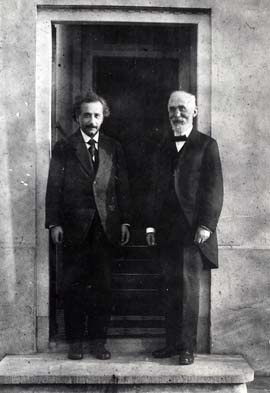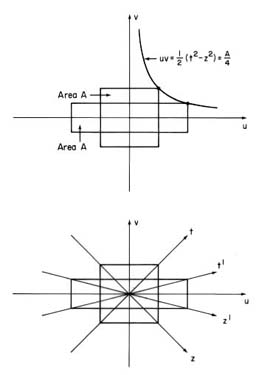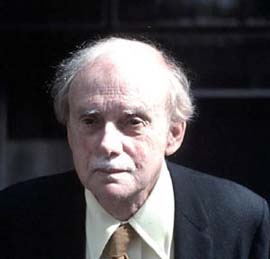Hendrik Lorentz and Paul A. M. Dirac

|
| Hendrik Lorentz (1853-1928). Photo from public domain. |
-
In addition, Lorentz was able to write one formula applicable to both
electric and magnetic forces. We shall talk about this later.
- The mathematics of Lorentz transformations was further developed by
Poincaré and later by Wigner as an important branch of group theory.
We call this mathematics "Lorentz group." Unlike three-by-three matrices
applicable to the three-dimenional Euclidean space, the Lorentz group
starts from four-by-four matrices applicable to the four-dimensional
Minkowskian space.
While we can study the three-dimensional rotation group using two-by-two matrices generated by three Pauli matrices, the most gratifying aspect of the Lorentz group is that we can study this group also using two-by-two matrices generated by six Pauli-like matrices. Three of them are the Pauli matrices and the other three are the Pauli matrices multiplied by i. The group of two-by-two matrices generated by these six Pauli-like matrices is called SL(2,c). The rotation group is therefore a subgroup of SL(2,c). Other interesting subgroups include the Lorentz groups applicable to two space dimensions and one time variable.
- The point is that modern physics is largely a physics of two-by-two
matrices and/or harmonic oscillators, since otherwise the problems are
not souluble. We know how to write down oscillator wave functions. How
much do you know about two-by-two matrices? For instance, do you know
how to diagonalize them?
This is not a trvial problem. Indeed, we need the Lorentz group to
study systematically two-by-two matrices which are everywhere in physics.

Light-cone coordinate system. - Another aspect of the Lorentz group is that, unlike rotations, Lorentz
boosts are not bounded. They are hyperbolic transformations. If you
feel uncomfortable about this aspect, you are not the first one. Paul
A. M. Dirac thought the transformation formulas are too cumbersome. He
came up with the light-cone variables, shown in the figure. Here,
we are talking about squeezing the area along the light cones when we
are making a Lorentz boost. Dirac introduced this light-cone coordinate
system in his 1949 paper:
- When we perform a Lorentz boost, we have a tendency to think
only about the hyperbola extending to infinity. Dirac's light-cone
coordinate system allows us to talk about localized a space-time region
being squeezed during the transformation. This allows us
to formulate the concept of Lorentz-covariant space-time localization.
Paul A. M. Dirac did not stop here. He felt that quantum mechanics is a physics of harmonic oscillators and special relativity is a physics of the Lorentz group. One way to combine quantum mechanics with special relativity is to construct a representation of the Lorentz group using harmonic oscillators. He considered coupled harmonic oscillators. Dirac then ended up a "remarkable representation" of the O(3,2) group in his 1963 paper:
Paul A. M. Dirac (1902-1984).
Photo by Bulent Atalay. - Dirac believed in building new physics by constructing beautiful mathematics.
Indeed, this O(3,2) paper became the mathematical foundation for
squeezed states of light which physicists studied so extensively in the
1980s and thereafter became one of the standard items in quantum optics.
It is fun and productive to study Dirac's papers. They are like poems.
Y. S. Kim (September 5, 2006)
According to Gerhard Hegerfeldt, there was a German physicist at the University of Goettingen who worked out transformation formulas assuming that the speed of sound is an invariant quantity, before Lorentz formulated his transformation law. Hergerfeldt told me that this manuscript might be in the Goettingen library.